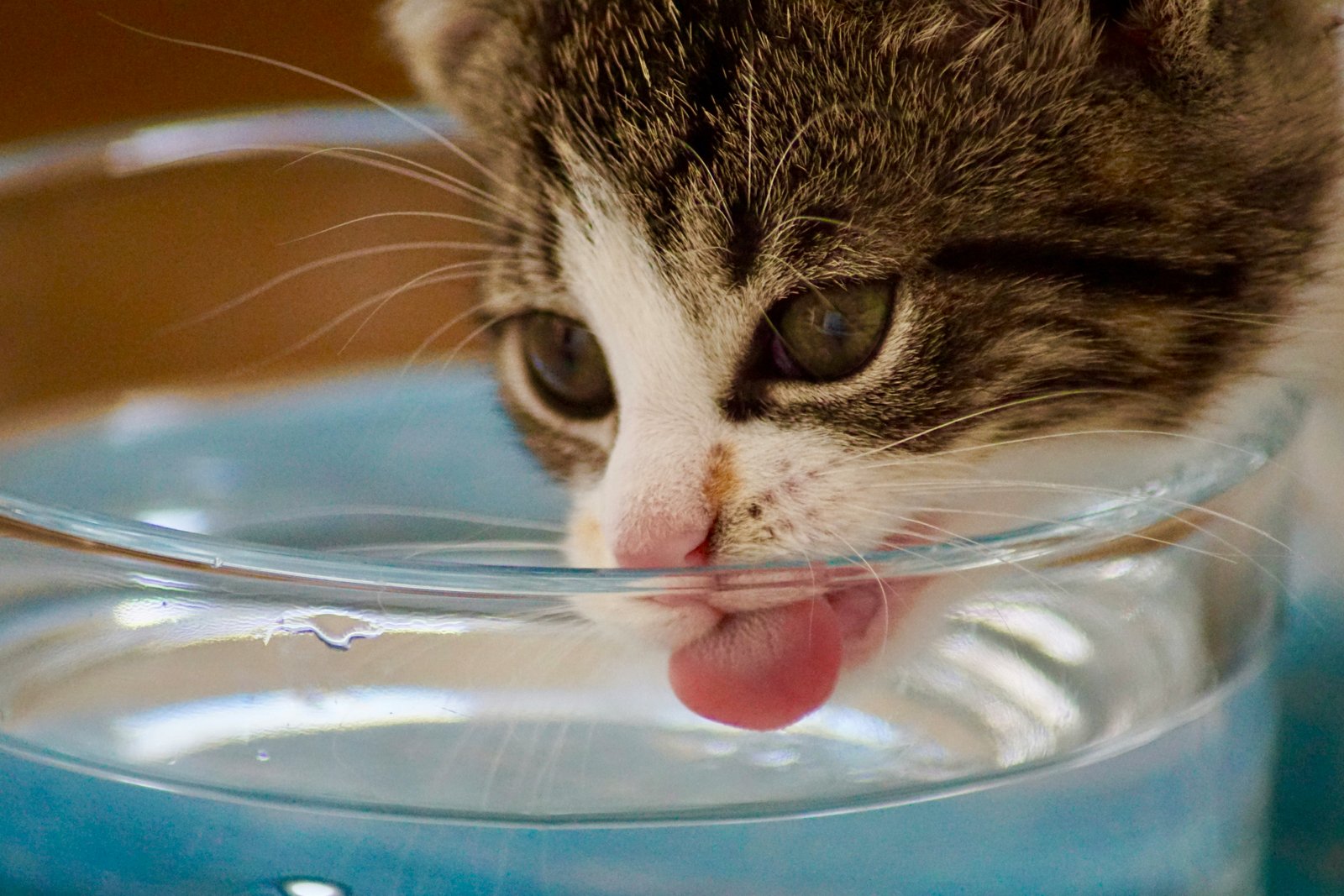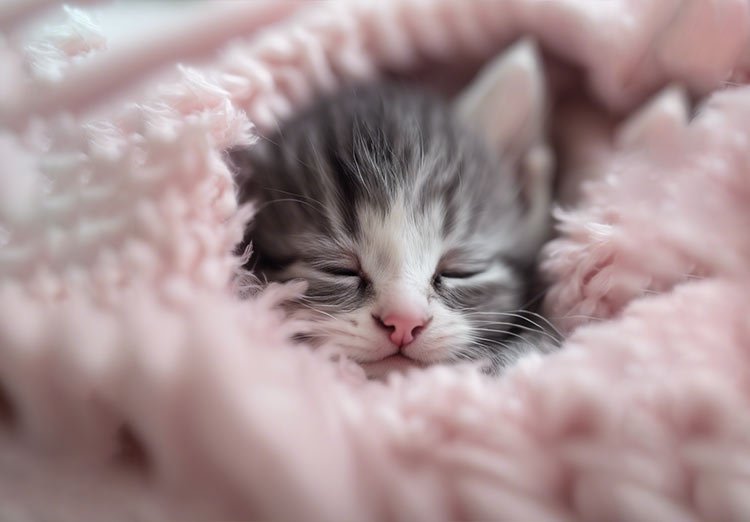Cats Dream : As we watch cats sleep peacefully, curled up in a ball or stretched out in the sun, it’s hard not to wonder what goes on inside their minds. Do cats dream? It’s a question that has intrigued cat owners and animal enthusiasts for years.
In this blog post, we will delve into the fascinating world of feline sleep and explore the evidence that suggests cats do indeed experience dreams. From their brain activity during sleep to their physical movements and vocalizations, join us as we unravel the mystery behind whether cats truly dream or not.
1. Cats Dream:Understanding feline sleep patterns
Cats are known for their love of sleep, often spending up to 16 hours a day snoozing in various cozy spots around the house.
But have you ever wondered if they dream during their slumber? Do cats experience the same vivid dreams that humans do? While we can’t exactly ask a cat about their dreams, studies suggest that felines do indeed dream during their sleep.
To understand feline sleep patterns, it’s important to know that cats go through different stages of sleep, just like humans. The first stage is the light sleep stage, where cats may still be somewhat aware of their surroundings.
During this stage, their muscles relax, and their heart rate and breathing slow down. As they enter the second stage, known as deep sleep, their body functions continue to slow down, and their brain waves become more synchronized.
It is during the third stage, also known as rapid eye movement (REM) sleep, where cats experience their most vivid dreams. REM sleep is characterized by rapid eye movements, twitching whiskers, and occasional paw movements.
This is similar to the dream state in humans, where our brains process memories and emotions. It is believed that cats may also be processing their experiences, adventures, and interactions from their waking hours in their dreams.
If you’ve ever noticed your cat twitching, purring, or making little mewing sounds while asleep, it’s highly likely that they are in the REM sleep stage and experiencing a dream. These adorable and sometimes comical behaviors give us a glimpse into the mysterious world of feline dreams.
While we may never fully understand the content of a cat’s dreams, it is fascinating to know that our feline friends have their own dream world just like we do. So the next time you see your cat peacefully snoozing away, you can wonder what fantastic adventures they are embarking on in their dreamland.
Tips for Caring for Newborn Kittens
2. The science behind cat dreams
Cats have always been known for their mysterious and enigmatic nature, leaving us wondering about their behaviors and thoughts. One common question that many cat owners have is whether or not cats dream. As it turns out, the science behind cat dreams is quite fascinating.
Studies have shown that cats, just like humans and many other animals, do indeed experience dreams during their sleep. This discovery was made through electroencephalogram (EEG) recordings, which measure brain activity.
When cats are in deep sleep, their brain waves resemble those of a sleeping human, indicating that they are in a state of REM (Rapid Eye Movement) sleep.
During REM sleep, which is the stage of sleep associated with dreaming, cats exhibit several interesting behaviors. Their eyes may twitch, their paws may move, and they may even emit soft vocalizations. These actions suggest that cats are actively engaged in a dream world, just as humans are.
But what do cats dream about? While we can’t truly know for sure, researchers believe that cats may dream about familiar activities and experiences from their daily lives. For example, a cat that spends a considerable amount of time hunting or playing may dream about these activities during their REM sleep.
Additionally, it is believed that cats may also dream about the emotional experiences they have had. This means that a cat may dream about chasing a bird, exploring a new territory, or even interacting with their human companions.
It’s fascinating to consider the rich dream lives that our feline friends may have.
While the exact content of a cat’s dreams remains a mystery, the fact that they do dream adds another layer to our understanding of their complex minds. It reminds us that cats, despite their independent and aloof demeanor, share some common traits with us as sentient beings.
Next time you see your cat sleeping peacefully, take a moment to wonder what adventures they may be embarking on in their dreams. It’s a reminder of the intricate and captivating world that exists within our feline friends, further deepening the bond between humans and cats.
3. Signs that indicate cats are dreaming
Have you ever wondered if cats dream? It’s a fascinating topic that has intrigued pet owners for years. While we can’t exactly ask our feline friends about their dreams, there are certain signs that indicate cats do indeed experience dream-like states.
One of the most obvious signs that a cat is dreaming is their physical behavior while sleeping. You may notice their paws twitching, whiskers twitching, or tail swishing back and forth. These movements resemble the actions they would perform while awake, suggesting that they are reenacting their dreams in their sleep.
Another telltale sign is their rapid eye movement (REM) sleep. Like humans, cats go through different sleep cycles, including REM sleep. During this stage, their eyes move rapidly under their closed eyelids. This is similar to when we humans experience vivid dreaming.
If you observe your cat’s eyes moving behind closed lids during sleep, it’s a strong indication that they are in the midst of a dream.
Furthermore, cats may emit soft noises during their sleep, such as purring, chirping, or meowing. These vocalizations are often associated with contentment or communication, suggesting that they may be communicating with dream characters in their slumber.
It’s also interesting to note that kittens and younger cats tend to have more intense and frequent dreams compared to older cats. This could be due to their active imaginations and the fact that their brains are still developing.
While we can’t fully understand the content of a cat’s dreams, these signs strongly suggest that our feline companions do indeed dream. So the next time you see your cat peacefully asleep, take a moment to appreciate the possibility that they may be embarking on their own whimsical adventures in dreamland.
4. Debunking common myths about cat dreams
Many cat owners have probably wondered at some point if their feline friends dream. After all, cats have a way of twitching their paws, flicking their tails, and making adorable noises while they sleep. But do cats actually dream? Let’s debunk some common myths about cat dreams.
Myth 1: Do Cats Dream like humans?Cats don’t dream like humans do.
Contrary to popular belief, cats do experience REM (rapid eye movement) sleep, which is the stage associated with dreaming in humans.
During this stage, the brain is highly active, and the body may display various movements and reactions. So, it’s safe to say that cats do dream, although their dreams may not be as complex as ours.
Myth 2: Cats dream about hunting.
While it’s true that hunting is an instinctive behavior for cats, it’s not necessarily the sole focus of their dreams. Cats’ dreams can encompass a range of experiences, including playing, exploring, or simply reliving daily activities. The content of their dreams likely reflects their personal experiences and interests.
Myth 3: Cats’ dreams are always pleasant.
Just like humans, cats can have both pleasant and unpleasant dreams. They may twitch or make sounds that indicate excitement or happiness during a pleasant dream.
On the other hand, they may display signs of discomfort or distress if they are having a bad dream.
It’s essential to provide a safe and peaceful sleeping environment for your cat to ensure they have more pleasant dreams.
Myth 4: Cats dream all the time.
While cats do spend a significant portion of their lives sleeping, not all of it is occupied by dreaming. Cats sleep in cycles, alternating between REM and non-REM sleep. The exact percentage of time spent in each stage can vary depending on the cat’s age and overall health.
So, they do dream, but it’s not a constant state during their sleep.
In conclusion, cats do indeed dream, but their dreams are likely to be different from ours. While we may never fully understand the contents of their dreams, it’s fascinating to observe their behaviors while they sleep and imagine the whimsical adventures they might be experiencing in dreamland.
What is Cat Calming Spray?
Cat calming spray is a product designed to help reduce stress and anxiety in cats. It contains natural ingredients that have calming effects on cats, such as pheromones, herbal extracts, or essential oils. The spray is typically applied to the cat’s bedding, favorite toys, or in the cat’s environment to create a sense of calm and relaxation.
How Does Cat Calming Spray Work?
Cat calming sprays work by releasing pheromones or natural scents that mimic the familiar and comforting smells of a mother cat. These scents help to create a sense of security and reduce stress in cats. When a cat senses these familiar smells, it triggers a relaxation response, helping them to feel more calm and at ease.
Best Seller cat calming spray
When Should You Use Cat Calming Spray?
Cat calming spray can be useful in a variety of situations where a cat may experience stress or anxiety. Some common scenarios where cat calming spray may be beneficial include: 1. Moving to a new home or environment 2. Introducing a new pet or family member 3. Traveling or going to the veterinarian 4. During loud noises or fireworks 5. Separation anxiety or fear of being alone It’s important to note that cat calming spray should not be used as a substitute for proper veterinary care or behavior training. If your cat’s stress or anxiety persists or worsens, it’s best to consult with a veterinarian for further guidance. In conclusion, cat calming spray can be a helpful tool in reducing stress and anxiety in cats. By creating a sense of calm and security, it can help cats feel more relaxed in various situations.




